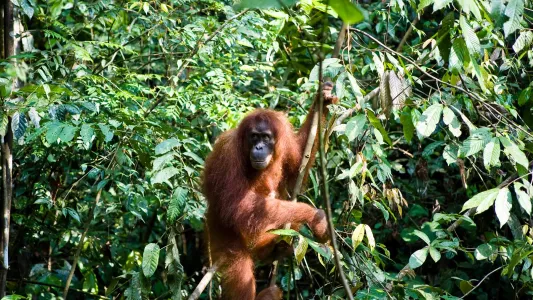The island of Sumatra sits in the westernmost region of the Indonesian Archipelago and is truly a unique place. It is its position, on the edge of the Indian ocean with the equator running straight through it that has made it one of the most biodiverse ecosystems in the world. It is home to an extraordinary array of plants and animals, many of which are critically endangered and endemic - found nowhere else on the planet but Indonesia's rainforests.
This tropical climate also offers ideal conditions for growing palm oil trees. Indonesia is the largest global producer of palm oil accounting for more than half of the world's supply. This growing industry is responsible for vast amounts of deforestation and destruction of natural habitat, and poses the very real threat of causing the extinction of Indonesia's most vulnerable species. One of the many animals at risk is the Orangutan.
In April 2014, photojournalist Sandra Hoyn (@sandrahoyn) made it her purpose to travel to the island of Sumatra to document the devastating effects of deforestation and other human interventions on local orangutan populations and to show the efforts of the people trying to protect the orangutans and preserve their natural habitat.
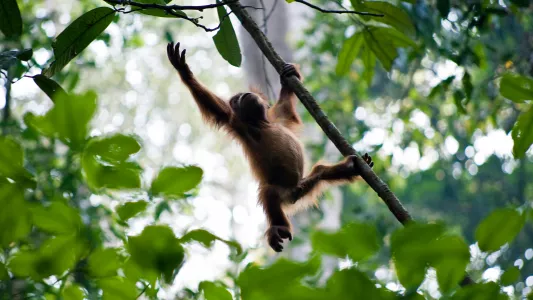
The Sumatran orangutan is one of only three species of orangutans and is found only in the north of Sumatra. There are roughly only 6,600 Sumatran orangutans left in the wild. It is designated as critically endangered and is on the IUCN's 'red list', and despite conservation efforts numbers are still in decline.
In her project The Last Orangutans, Sandra takes us on a journey to the different corners of this multifaceted issue. Idyllic visions of the lush, green rainforest at an orangutan sanctuary in Gunung Leuser National Park are interspersed with apocalyptic scenes of burnt lands decimated by fires and peppered with military firefighters armed with guns and water hoses.
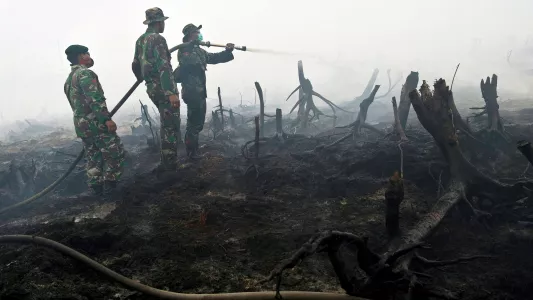
Sandra shows the sheer devastation caused by these fires, turning what once was a thriving ecosystem into nothing but smouldering ashes. Her photos reveal the aftermath of illegal forest fires started intentionally to quickly clear large areas of rainforest and make space for more palm oil plantations. Sumatra has lost almost 50% of its tropical rainforest in the last 22 years, according to WWF and rising demand for palm oil is putting the Sumatran rainforests and its inhabitants at risk from further illegal deforestation.
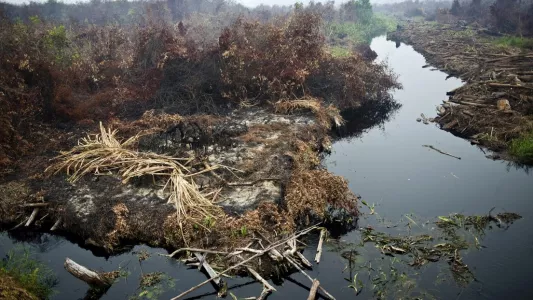
But despite this bleak outlook, there are people determined to change the fate of Asia's precious great apes. During her time in Indonesia, Sandra followed the efforts of the Sumatran Orangutan Conservation Program (SOCP), an NGO working to protect the habitat of wild sumatran orangutans, providing sanctuary for injured or captured orangutans and rehabilitating them back into the wild.
It is here that Sandra captured what I think is the most striking image in her series; a photo of 14 year old Angelo, a male orangutan, sedated and peacefully lying on an examination table. Angelo requires medical care after he was shot at by workers when he wandered onto a palm oil plantation in search of food. He was found with air gun metal pellets embedded in his body. Stretched out on the bed the adult orangutan is larger than most men. His hands tentatively resting on his belly, his orange hair lacking its distinctive golden shine, dulled by the absence of sunlight in the cold and clinical room - This is the disturbing image of an animal removed from its natural element.
Seeing this majestic ape in such a surreal scene puts into perspective the extent of the suffering this human invasion has caused. Sandra has an amazing ability to capture an intimacy with her subjects exposing a poignant familiarity between us and the orangutans that cannot be ignored.
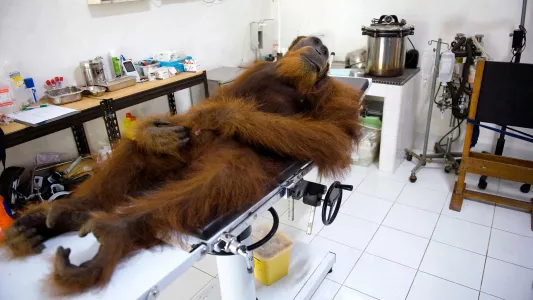
It is not just the wildlife that is being threatened by the palm oil industry. Indonesia is also home to many indigenous people who rely on the rainforests to hunt, gather food and to preserve their traditional way of life. As more and more land is cleared people are being pushed out of their ancestral lands and the rainforest is becoming an increasingly dangerous place for them to live.
It is impossible to fathom the full extent of the destruction happening in the Indonesian rainforests. With The Last Orangutans, Sandra helps to bring awareness to the irrevocable impact these industries have on this precious environment and calls for change, before animals like the sumatran orangutan are lost forever.
